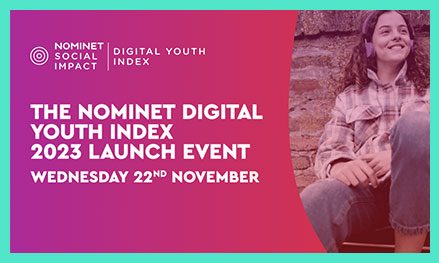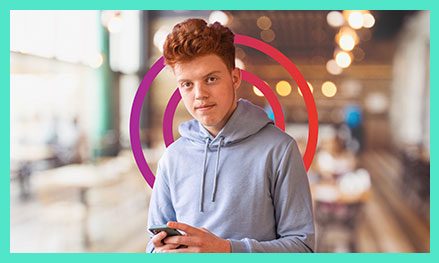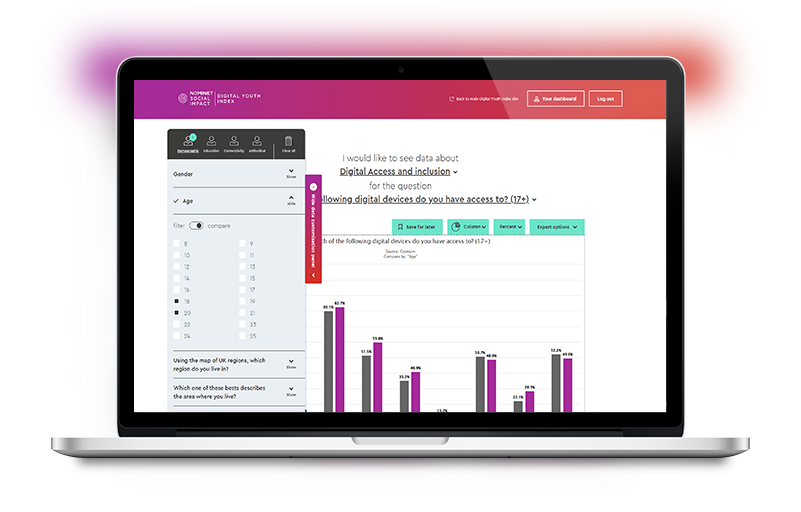Unsurprisingly, young people know things about the online world that we adults do not. In families, older siblings monitor their younger siblings’ usage, deleting apps or flagging content.1 They worry about the adverts that come their way and how their data is being used.2 They seek out communities of neurodiverse individuals or LGBTQ+ groups, and create them where they don’t find them. They make deeper connections, ‘you can say a lot more and get to know each other a lot more [online]’.3
But, like the in real life (IRL) world, the online world is not created equal. Racism is abound. Gender changes your experience. Algorithms push content to increase your clicks. Imagine following a musician you like and then followers of that musician and gradually, your daily feed fills with violent content. What does scrolling through attacks or ‘pranks’ day after day, age 14, do to your view of the world?
The digital world will open or close our young people’s futures. One in five young people (8-24) do not have access to a laptop or desktop, with expense being the most cited reason.4 Real world poverty creates digital poverty. And lack of digital access exacerbates cycles of socio-economic disadvantage. 75% of all jobs require basic digital skills.5 Good employment is one of the highest social predicators of health and wellbeing.6 Young people need the digital world to access opportunity. Digital inequality is creating a downward spiral of keeping the poorest in our society poor.
We have immersed our young people in a world that is both essential to their future wellbeing, incredibly exciting and filled with unregulated risks. When asked ‘have you ever seen or experienced anything online which makes you upset?’, 23% of young people reported trolling or abuse from strangers, 20% fraud or identity theft, 25% sexual content, 17% dangerous eating habits and 15% self-harm or suicide.7
This is our young people’s daily world, their source of education, socialising and future prospects. And during their daily walk in the online space, they can accidentally see someone their age commit suicide. As one young person said to us after seeing another young person self-harm, ‘It definitely just stays with you’.8
Research that gives voice to young people’s digital experiences is vital, and Nominet’s Digital Index is a brilliant example of this. We need data of how young people experience the digital world, or how they are excluded from it. The Index, The Good Thing’s Foundation’s Blueprint to Fix the Digital Divide and Catch22 and Nominet’s research partnership in digital skills are examples of where a data-driven approach can guide this seismic societal shift.
Young person data can and should inform regulation and shape mechanisms of accountability. For the Online Safety Bill and Ofcom’s regulation to be effective, we need to understand the true, experiential dangers of the online world alongside its ample opportunities. From this, government can build incentive mechanisms and regulatory frameworks that keep digital platforms accountable.
Whether it’s better age restrictions, flagging and deleting content promptly, or community guidelines that are age- and literacy-appropriate, young people are calling for what they think is needed.9 And we should be listening.
1Catch22’s National Online Harms Consultation, 2020
2Online Harms Experienced by Children and Young People: ‘Acceptable Use’ and Regulation, Dr Faith Gordon, 2021
3Online Harms Experienced by Children and Young People: ‘Acceptable Use’ and Regulation, Dr Faith Gordon, 2021
4Nominet Digital Youth Index, 2021
5No Longer Optional: Employer Demand for Digital Skills, DCMS, 2019
6Health Equity in England: The Marmot Review 10 Years On, The Health Foundation, 2020
7Nominet Digital Youth Index, 2021
8Online Harms Experienced by Children and Young People: ‘Acceptable Use’ and Regulation, Dr Faith Gordon, 2021
9Online Harms Experienced by Children and Young People: ‘Acceptable Use’ and Regulation, Dr Faith Gordon, 2021
Share this article







